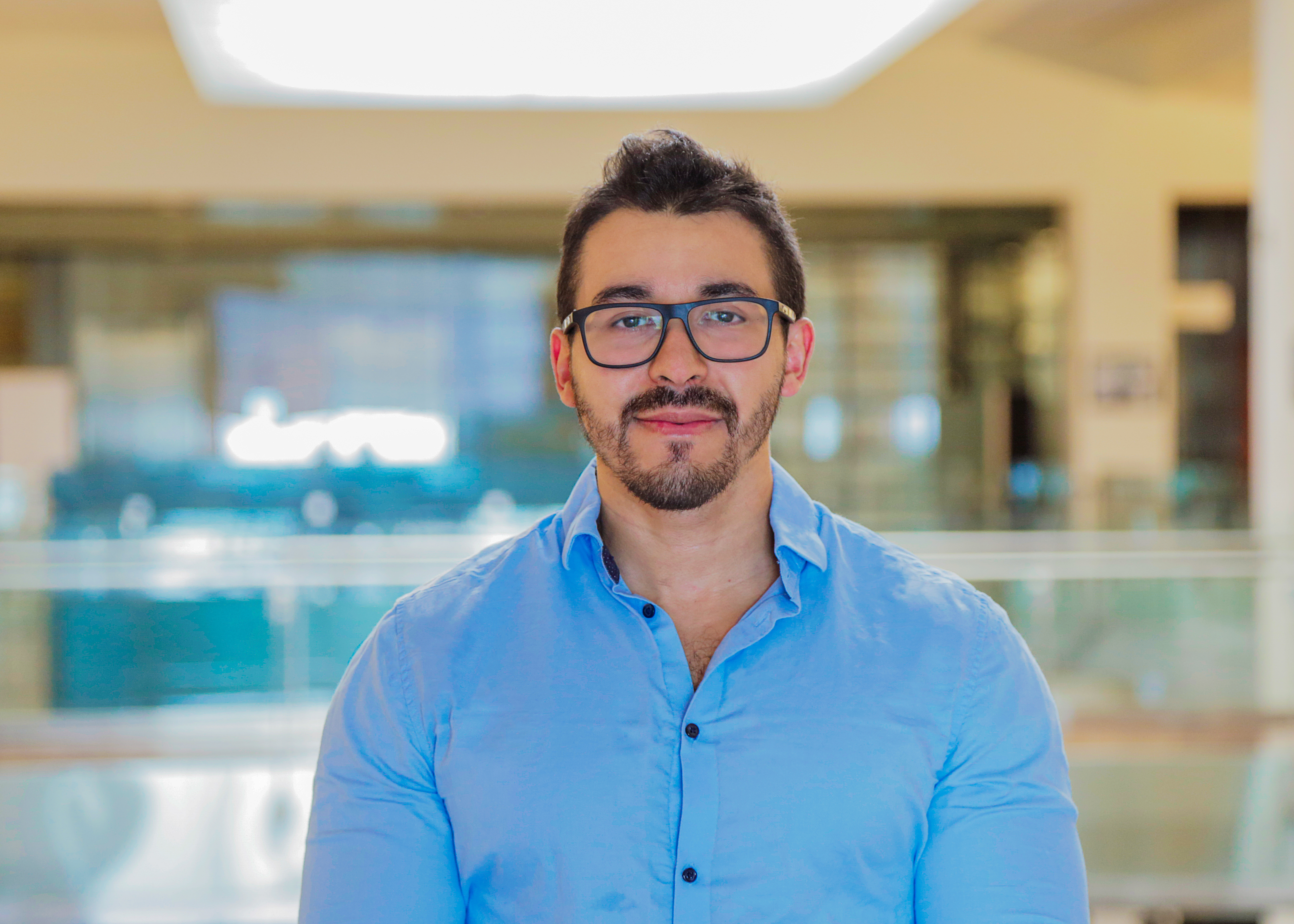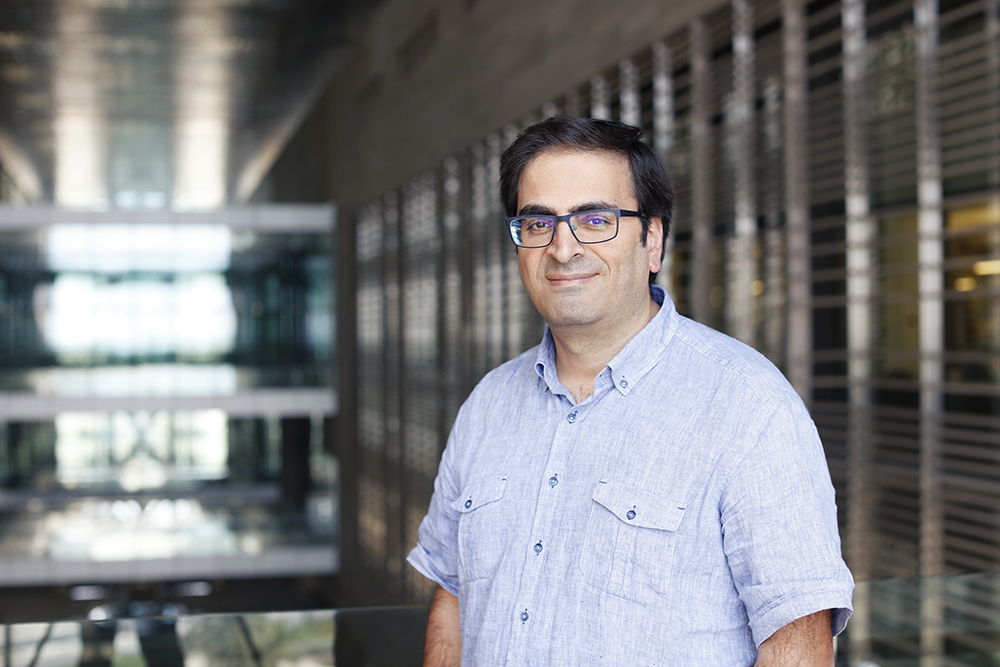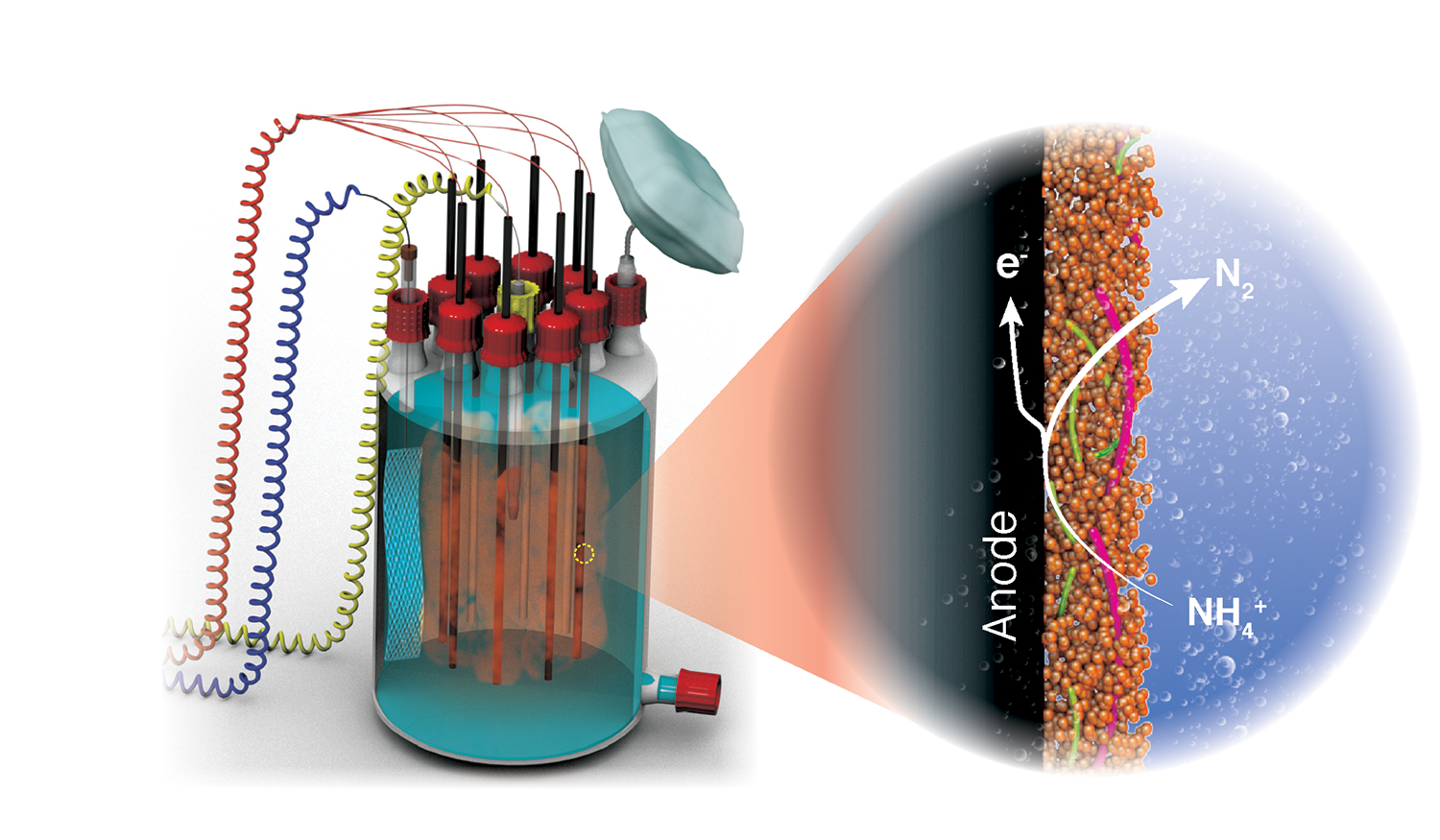
Through a process of removing the ammonium from wastewater before it is discharged, energy can be harnessed and used for different applications.
As global megatrends require many industries to find innovative ways to be sustainable and more energy-efficient,a recent paper by a KAUST Ph.D. student and collaborators, published in Nature Communications, offers a novel perspective. The research details a process where ammonium present in wastewater can be removed directly in one step together with the recovery of energy in the form of electrical current or energy-rich hydrogen gas.

Dario Rangel Shaw is a Ph.D. student in the Water Desalination and Reuse Center. He focuses on environmental biotechnology applied to wastewater treatment.
Shaw commented, "These findings have a significant implication in the context of energy-efficient treatment of nitrogen-rich wastewater."
Towards an energy-positive system
The breakthrough underpinning the research demonstrates how anammox bacteria can oxidize ammonium coupled with extracellular electron transfer-based respiration. This process represents a more energy-efficient wastewater treatment method as it harnesses anammox bacteria's surprising ability to "breathe" solid-state matter.
The anammox process involves anaerobic ammonia oxidation. This method is used for sustainable wastewater treatment because it facilitates a decrease in energy consumption compared to conventional wastewater treatment methods. The aim is to remove the ammonium, a contaminant in the wastewater, before it is discharged.

Pascal Saikaly is an associate professor of Environmental Science and Engineering within the university's BESE division.
By harnessing microorganisms in nature, the KAUST team employs environmental biotechnology to build bioreactors that select the right organisms capable of achieving these energy-efficient goals. Instead of adding energy, the objective is to make the process neutral, at minimum, or optimally generate more energy than is required for treating the wastewater. This recovered energy can then be used for different purposes.

Anammox bacteria grow on the surface of an electrode and convert ammonium to nitrogen gas. The electrons released from this process flow through the electrode in the form of an electric current that can be used to generate energy-rich hydrogen gas. This is a step forward toward energy-neutral or -positive wastewater treatment.
There are currently two pilot technologies being explored to apply this research. The team has set up pilot-scale reactors next to the KAUST wastewater treatment plant. Using the KAUST community's wastewater, these systems are coupled with photovoltaic panels to treat the wastewater. The solar-powered recovered water can be used, for example, to irrigate the campus golf course.
Different technologies can be utilized depending on the type of organism. Within the context of Shaw's work on electro-anammox, the wastewater not only contains ammonia but also organics. So, another way to couple the technology to generate electricity is by harnessing the inherent energy in the organic compounds of the wastewater.
Thereby, the two units use different methods. The first unit removes organics and generates electricity or hydrogen, and the second unit converts the ammonia to energy-rich hydrogen.
"You can treat both of them and generate hydrogen at the same time. Both processes can be coupled with solar energy because you don't need a lot of energy to drive the process," Saikaly explains. "We're very excited about the work."
Importance for the Kingdom
Water scarcity is an important issue to tackle, both regionally and globally. The KAUST team's process can assist in addressing this major challenge while meeting energy efficiency targets. Hydrogen gas is known to be an energy-rich gas that can also be used as fuel, so this is an excellent eco-friendly step forward for sustainable wastewater treatment.
This multi-disciplinary approach, involving chemistry, process engineering, microbiology, next-generation sequencing technologies and bioinformatics, offers value-added prospects to promote the circular economy and Vision 2030.
As an example, a major project in NEOM involves converting renewable energy (solar and wind) to hydrogen. Using the Haber-Bosch process, hydrogen can be converted to ammonia and then transported for different markets. The challenge is to convert the ammonia back to hydrogen in an energy-efficient manner, ultimately for use as fuel. Conventional methods require expensive metallic catalysts and conditions demanding high-pressure, high-temperature settings above 500 degrees.
Shaw's anammox process uses microorganisms to convert the ammonia back to hydrogen at room temperature.
"In our case with electro-anammox, growing environmental strains of anammox bacteria at room temperature represents a serious advantage with respect to these other catalysts," Shaw said.






